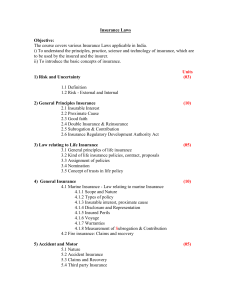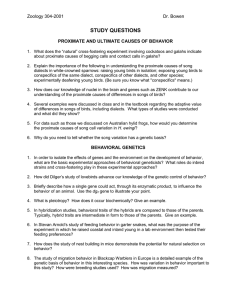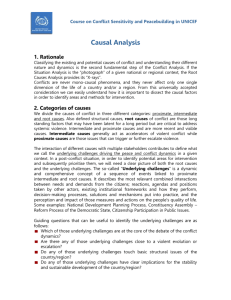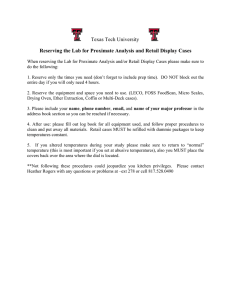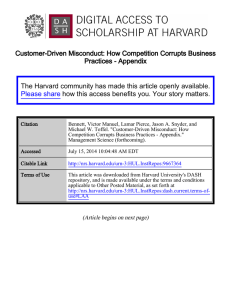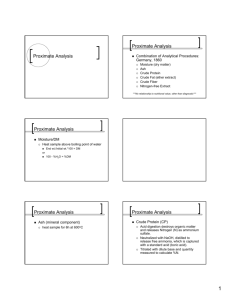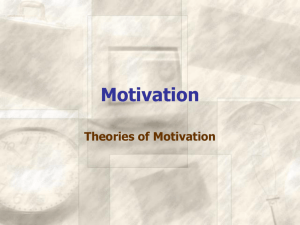Customer-Driven Misconduct: How Competition Corrupts Business Practices Victor Manuel Bennett Lamar Pierce
advertisement
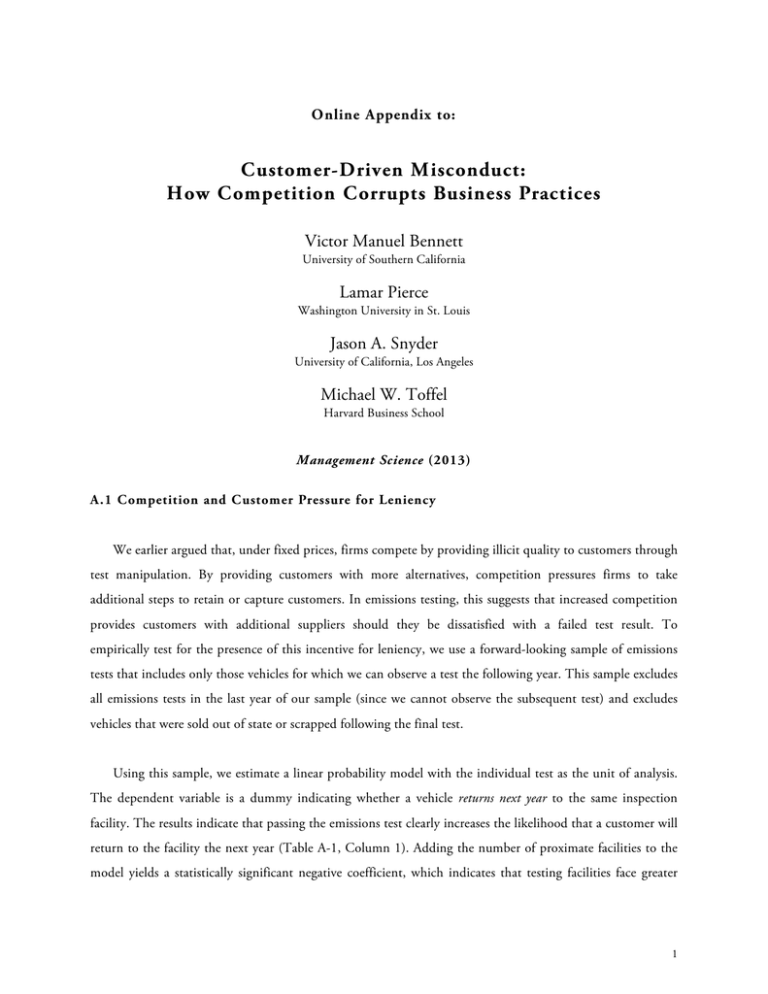
Online Appendix to: Customer-Driven Misconduct: How Competition Corrupts Business Practices Victor Manuel Bennett University of Southern California Lamar Pierce Washington University in St. Louis Jason A. Snyder University of California, Los Angeles Michael W. Toffel Harvard Business School Management Science (2013) A.1 C ompetition and C ustomer Pressure for Leniency We earlier argued that, under fixed prices, firms compete by providing illicit quality to customers through test manipulation. By providing customers with more alternatives, competition pressures firms to take additional steps to retain or capture customers. In emissions testing, this suggests that increased competition provides customers with additional suppliers should they be dissatisfied with a failed test result. To empirically test for the presence of this incentive for leniency, we use a forward-looking sample of emissions tests that includes only those vehicles for which we can observe a test the following year. This sample excludes all emissions tests in the last year of our sample (since we cannot observe the subsequent test) and excludes vehicles that were sold out of state or scrapped following the final test. Using this sample, we estimate a linear probability model with the individual test as the unit of analysis. The dependent variable is a dummy indicating whether a vehicle returns next year to the same inspection facility. The results indicate that passing the emissions test clearly increases the likelihood that a customer will return to the facility the next year (Table A-1, Column 1). Adding the number of proximate facilities to the model yields a statistically significant negative coefficient, which indicates that testing facilities face greater 1 difficulty retaining customers who have more suppliers from which to choose (Column 2). These two results are robust to the inclusion of controls for the tested vehicle’s vintage and usage and to the inclusion of fixed effects for inspection year, neighborhood, and make/model (Column 3). In Figure A-1, we plot the predicted probability of return at various levels of competition, based on a model that regresses returns next year on number of proximate facilities and on that value squared. The probability of return consistently decreases out to 10 competitors, suggesting that competition continues to impact firms far beyond the first, second, or third proximate firm. As mentioned earlier, Column 4 of Table A-1 presents the model with luxury vehicle interacted with number of proximate facilities. The results indicate that owners of luxury vehicles are less prone than owners of other vehicles to abandon their facility in local markets with greater competition. A.2 C ompetition and the Distribution of C onditional Facility-Level Leniency Because the pass rates in Figure 6 do not control for differences in facilities’ neighborhood characteristics or vehicle portfolios, we estimated conditional pass rates as follows. We estimated a regression identical to Column 2 of Table 2, generated predicted pass rates for each test, and calculated facility averages from these predicted values. The difference between the observed facility pass rates and these predicted facility averages became our facility-level conditional pass rates. Figure A-2 depicts the distributions of these conditional pass rates for the subsamples of (a) facilities with no local competitors and (b) facilities with at least one local competitor. These distributions are very similar to the unconditional distributions depicted in Figure 6. Facilities facing no local competitors are approximately 1.6 percentage points more likely to fall in the bottom 10 percent of the distribution than their counterparts that face local competition (t stat=2.89; p<0.01). Facilities that face no local competition are also 0.6 percentage points less likely to fall in the top 10 percent of the distribution, although this difference is not statistically significant. To ensure that these differences are not artifacts of data structure, we run 10,000 simulations, in which we randomly assign each of the 11,197 firms to a competitive or noncompetitive designation, then test the difference in the frequency with which a firm in each group is in the bottom 10 percent of the pass-rate distribution. Out of 10,000 simulations, only eight produce a t-statistic exceeding the value of 3.27 observed in our data. 2 Appendix Table A-1: Impact of competition on return probability Dependent variable: Returns next year Passed inspection (1) (2) (3) (4) 12.580*** (.127) 12.610*** (.126) 10.677*** (.113) 10.68*** (.113) -1.070*** (.086) -.677*** (.088) -.729*** (.089) Number of proximate facilities Luxury vehicle Absorbed .480*** (.167) Number of proximate facilities X Luxury vehicle Odometer level, squared, and cubed Included Included Included 3-digit ZIP code fixed effects Included Included Included Year fixed effects Included Included Model year and model year squared Included Included Make X model fixed effects Included Included Sample All facilities All facilities All facilities All facilities Observations 21,411,677 21,411,677 21,411,677 21,411,677 Note: *, **, *** indicate significance at the 10%, 5%, and 1% confidence levels, respectively. Results reported are OLS coefficients and standard errors multiplied by 100. Parentheses contain standard errors clustered at the facility level. 3 .45 Appendix Figure A-1: Predicted return rate by competition level Mean return rate from raw data Returns next year .35 .4 95% confidence interval .3 Regression predicted return rate 0 2 4 6 Number of proximate facilities 8 10 Note: Note: Predicted pass rates and confidence intervals are derived from regressing returns next year on number of proximate facilities and on that value squared. Number of proximate facilities calculated using a 0.2-mile ring around the focal facility. Figure A-2: Distribution of conditional pass rates, by market structure Middle 80% of the overall distribution Top 10% of the overall distribution 1+ proximate facilities (dash) No proximate facilities: 10.8% 1+ proximate facilities: 9.2% T-stat of difference: 2.89 No proximate facilities (solid) -.15 No proximate facilities: 9.7% 1+ proximate facilities: 10.3% T-stat of difference: -1.27 No proximate facilities: 79.5% 1+ proximate facilities: 80.5% T-stat of difference: -1.21 0 Number of proximate facilities 5 10 15 Bottom 10% of the overall distribution -.1 -.05 0 Facility deviations from predicted pass rate .05 .1 Note: There are 11,194 total observations. Kernel density estimation used. No proximate facilities means that the facility never faced a neighboring test center during the sample period. Number of proximate facilities calculated using a 0.2-mile ring around the focal facility. 4

